Storytelling in a Yoga Class
Categories: Methodology

Anusara Yoga and Storytelling
There are many benefits of storytelling in a yoga class. Anusara Yoga classes often begin with a story. A story sets the theme for the class and is the container for not only the intention but also the higher ideals of the practice.
Anusara teachers often describe a relatable experience that also connects to an aspect of yoga philosophy. Furthermore, there’s a huge gift of a well-told story that is woven throughout a class.
The gift is self / Self recognition. Storytelling in a yoga class provides considerable insight into how to successfully approach our practice and our life.
Above all, yoga practice is a process of our becoming conscious to our constant creation and re-creation of our ever-changing life story.
Through great storytelling in yoga class, we recognize ourselves. We are the story.
The Story of Anusara Yoga’s Invocation
Enjoy Judyth Hill’s storytelling of the Anusara Invocation. Be entertained and captivated as you listen to a master in the oral storytelling tradition.
Epic Yoga Stories
For thousands of years, storytellers were highly regarded by kings and commoners. In fact, storytellers held a place of such esteem that financial, political and military decisions were not made without their influence.
In ancient India, communities would gather for teachings. Between the formal lessons, stories would be told by the Bards of that time to re-animate proper personal, moral, social and spiritual precepts.
Great ancient, literary works of classical Indian yoga including: The Vedas, The Mahabharata and Ramayana, The Puranas are examples of these kinds of epic stories. Initially, these yoga storytelling epics were memorized and transmitted orally. Eventually, these classics were written down centuries later.
Memory and Storytelling Structure
Undeniably, memorizing these epic yoga stories was an incredible feat. For example, The Mahabharata, described as, “the longest poem ever written,” contains over 100,000 couplet shloka’s. A shloka is a verse using a specific meter.
Astoundingly, The Mahabhrata’s shloka’s contain about 1.8 million words. Imagine memorizing nearly 2 million words in order to tell a story! As comparison, The Mahabharata is ten times the combined length of the ancient Greek epic poems by Homer: the Iliad and the Odyssey.
Certainly, to comprehend the mental capacity it took to retain these classic epic tales in memory is inconceivable for us today. However, it points to the importance of memory when mastering the art of storytelling.
Today, we no longer rely on the oral tradition to relay ideas and information. While our modern yoga practice and teaching exists in contemporary written language culture, it’s valuable to explore storytelling aspects that fall into patterns we may easily identify. These patterns are called narrative structure.

Yoga and Narrative Structure
Recognizing the patterns of narrative structure helps us to understand our selves and our lives better. In short, this remembering and recognition is yoga.
Narrative structure has three parts: Beginning, Middle and End. Not only do we see this pattern in good storytelling, it’s also part of all aspects of life.
For example, nature moves, constantly and cyclically, in this identifiable pattern. Likewise, a flower blooms, it sustains it beauty, it fades and returns to earth.
Similarly, the end of one cycle becomes the beginning of the next. Meanwhile, features and situations spin-off mid cycle and constantly birth new beginnings.
Storytelling Ritual
Yoga practice is a living story. Furthermore, it demands our having a capacity with ritual, a word that means, repeat.
Great yoga teachers develop the skills to become accomplished leaders of ritual by being ardent students of beginning, middle and end.
Once we identify the characteristics of beginning, middle, end repeating patterns, the questions a good storyteller, yoga practitioner, or yoga teacher has to ask herself is, “Where am I?” and, “How do I step into this dance?” And she considers, “Am I at the beginning, middle, or end?”
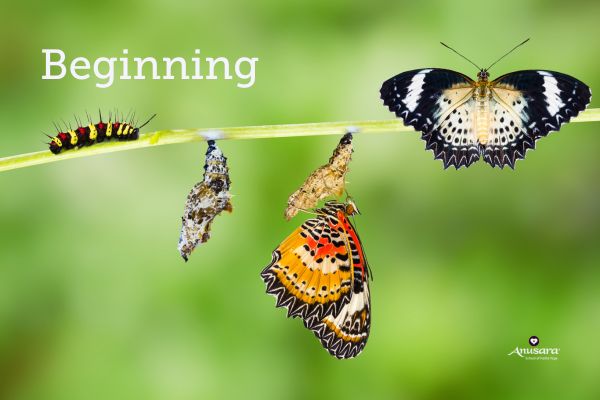
What’s Considered “Beginning” for Storytelling in a Yoga Class?
Kinesthetically, a beginning has excitement. It has mystery and a tippy sort of feeling, a feeling that you are about to fall in.
In addition, at the beginning of a teaching or story, we want to expand the edges of our language to create that energy of the unknown, engendering curiosity, engagement and a willingness from our students to surrender to what is about to happen.
Through the beginning words of our yoga storytelling in a class, we create a longing in our students to acquiesce, to take this step with us. When we have collective engagement, we have gotten somewhere.
The energy field of beginning has a lot of “hello’s.“ As storytellers, we draw our listeners into initial elements of introduction. Understandably, the novelty of beginning creates nervousness, insecurity and discomfort.
Therefore, we must start with the space of luscious invitation, a warm welcome, a bridge to travel from then to now, to the exciting part, which is the joy engendered by that mysterious discovery, “Oh, here we are!”
Anusara Yoga teachers regularly offer this level of mastery in their Anusara classes, workshops, retreats, and trainings.
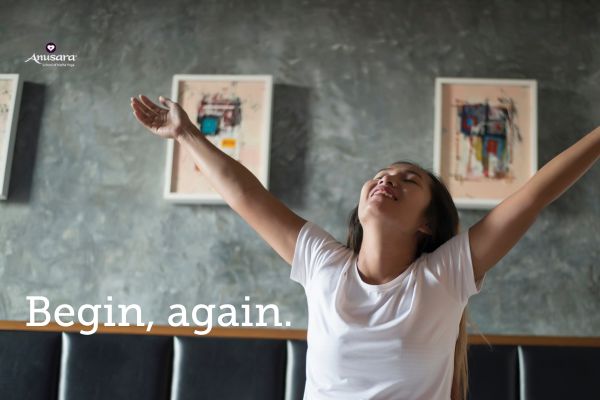
Psychologically, we need beginnings so that we may grant ourselves the compassion and forgiveness inherent in a new beginning.
Beginning also Means Begin, Again
Honestly, if we grant ourselves permission, then something can start over. The beginning is the place that holds potential. We explore opportunities to release and forgive. Moreover, we may have compassion for any of the mistakes we have made in the previous middle.
Truly, any beginning is a moment of letting go, of saying goodbye. Clearly, we find ourselves facing the decision of what to bring with us on our next journey. Equally, we also consider what must be left behind.
Beginnings hold compassion, welcoming, forgiveness, excitement. Beginnings are a gift that we owe ourselves.
Ask yourself, “Am I in a middle that I have been in for a very, very long time?” If so, perhaps it’s time to create a new beginning.
At this point, there is work. The work of beginnings includes visioning and planning coupled with a conscious preparation for a fundamental shift into a new middle.
When storytelling, we know that we have gotten to the end of our beginning when we stop and, energetically and verbally, everyone exclaims, “Ohhhh!!”
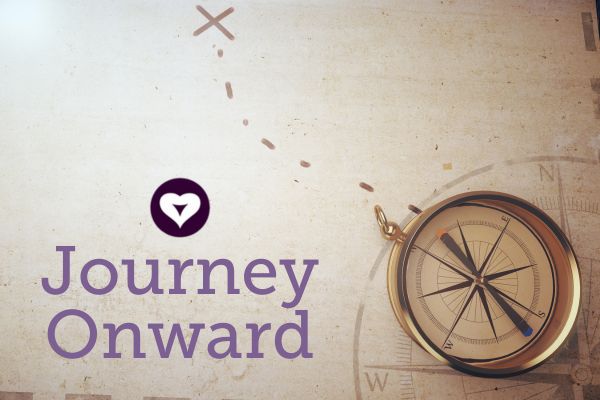
Where’s the “Middle” of Storytelling in a Yoga Class?
The middle is a place of deeper discovery. The conversations shift away from the excitement of introduction, into a depth of exploration.
At this juncture we begin to stitch the beginning to the middle. Here our skills as teachers and storytellers are heavily called upon. Middles are about lining up the stranger with the story.
As the wave of novelty starts to wear off, middles can become tedious, until we understand that the middle holds everything of value. Our job is to constantly re-create discovery and potency in our middles.
So, what do we do to pull our students along?
The engagement at the beginning has got to go somewhere. In like manner, our task is to keep the middle moving down, in and forward into the next thing. Here are some tips and tricks.
Tips and Tricks to Sustain Engagement
How to Use Your Voice and Language to Create a Better Yoga Class
- Stay in the Kinesthetic
Use speech that evokes a feeling, a texture, a color, a smell, a sound, a visual description, a taste. Make your speech sensory. Use the 5 senses in your language.
- Intentionally Mess Up
Humans mess up. Pick some some aspects to not get right so that, by contrast, you create the possibility for things to work out.
- Hold Back, Maintain the Mystery, Slowly Reveal
Speak in a way that is hydrating and awakens curiosity. How do you constantly grab the listener’s attention? Play, like Shiva, in contrasting acts of concealment and revelation. Hold back what was mysterious about the beginning, for slow reveals thought the current middle.
- Vary Timing and Intonation
Notice language, word choice, intonation and sequencing. Is it drying or hydrating? Is it dull or juicy? Monotonous or dynamic? If you are losing your student’s attention, that has everything to do with you. Can you feel it? Can you see it? Can you become so sensitive you head-off the zoning-out?
From Beginning to Middle – Keep it Moving, Stay Engaged
At the beginning we explore imaginative novelty. In the middle we explore sensate hydration and potency. For example, we can thicken a character, a cue or a yoga pose and make it a teaching point. Also, we may make a tiny attribute huge, engaging and voluptuous, and in so doing, develop that aspect into an intricate part of the overall teaching.
The middle is the place where everything happens, where nothing is insignificant. Uniquely, this is the substantive magnificence of our practice and of our lives.
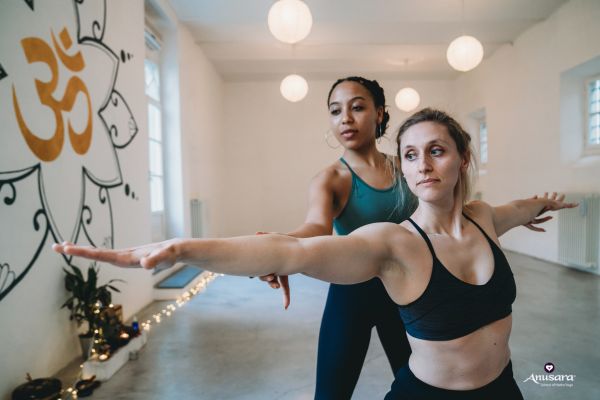
Engagement is requisite! This is one of Anusara’s big Tantric teachings, “The universe is already free. We are not here to become free. We are here to become engaged.”
How Do We End Storytelling in a Yoga Class?
In any teaching, story, or practice, there is a sub-cycle of repeating beginning-middle, that engenders the deep engagement that is critical for the actual “end” to work.
Foremost, personal involvement at the beginning must happen and continue all though the middle, otherwise we get to the end and say, “I don’t care.”
The Unknown Becomes Known
There has to be some unknown piece that stays unknown until the very end. A marvelous mystery introduced at the beginning, held all through the middle, and resolved at the end.
In fact, the mystery keeps us “on it” and engaged. Ultimately, it nourishes us with a beautiful feeling of capitulation and satisfaction when we reach the end.
We know that we’ve arrived at a place and that we have traveled there together, at an end, whether that end is regrettable or wonderful.
Consequently, the end is a completion that establishes the space for the next beginning.
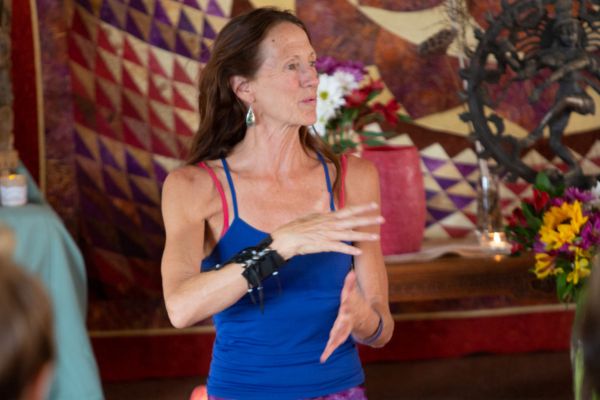
A master storyteller is more than a teacher, she transports the listener, body, mind, heart and soul, on journeys that hold us captive and forever transform us.
Yoga Storytelling Value
As we expand our skillset with beginning-middle-end modality, we create a reliable container that can arc our students and our practice, through story, into the ecstatic, where the end is always another beginning that we may not be able to see if we do not travel faithfully towards it.
In essence, ritual, practice and story guide us into the realm of the mystical experience. To tell a story beautifully we must carry that story in our bones, in our heart, in our vessels. Stories, beautifully told, allow us to drink-in the nectar of this fabulous, miraculous gift of life.
By and large, our breath and bodies are story constantly telling and re-telling themselves into being, into becoming, into the next presenting transformation.
Storytelling is not an unapproachable skill for only the charismatic few. Story is in all of us.
The study of story is present in the study of our yogic practices. In truth, we may start our study each morning as we sit for pranayama, giving attention to the rhythmic unfolding pattern that develops as our asana progresses from stillness into moving poetry that transcribes from our hearts as we transform.
About the Content Creators

Madhuri Martin
A part of Anusara Yoga’s merry band from its inception, Madhuri enjoys playful practices that keep her connected to serious teachings. When not traversing mountain peaks, you’ll find her swimming in the ocean rediscovering Grace.

Lisa Long, M.A.
Lisa wants to live in a world where Love gives you a permission slip to drop the mask and be who you are. She enjoys practicing near water to remind her to remain in Love’s flow.







